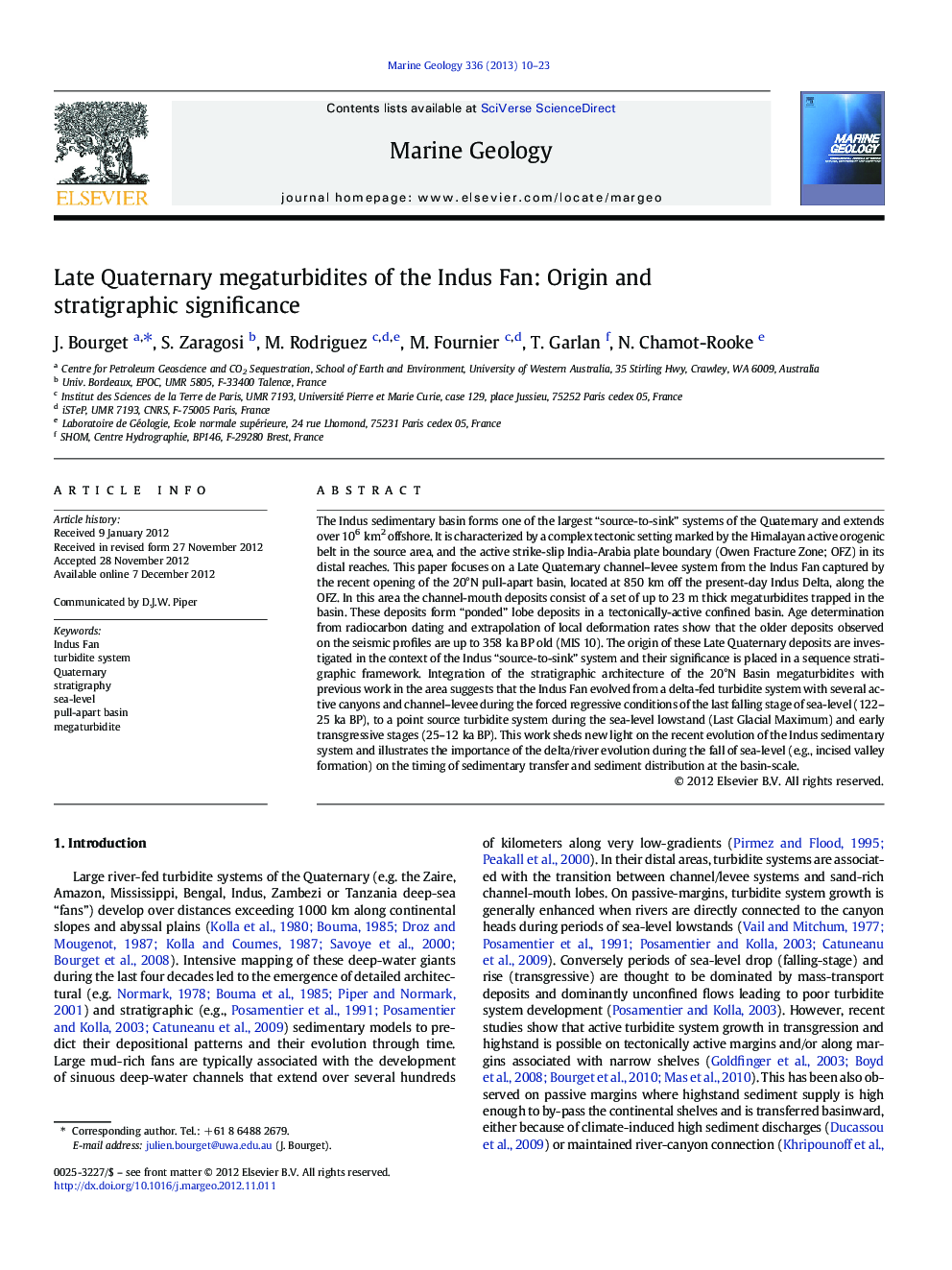| کد مقاله | کد نشریه | سال انتشار | مقاله انگلیسی | نسخه تمام متن |
|---|---|---|---|---|
| 4718433 | 1639116 | 2013 | 14 صفحه PDF | دانلود رایگان |

The Indus sedimentary basin forms one of the largest “source-to-sink” systems of the Quaternary and extends over 106 km2 offshore. It is characterized by a complex tectonic setting marked by the Himalayan active orogenic belt in the source area, and the active strike-slip India-Arabia plate boundary (Owen Fracture Zone; OFZ) in its distal reaches. This paper focuses on a Late Quaternary channel–levee system from the Indus Fan captured by the recent opening of the 20°N pull-apart basin, located at 850 km off the present-day Indus Delta, along the OFZ. In this area the channel-mouth deposits consist of a set of up to 23 m thick megaturbidites trapped in the basin. These deposits form “ponded” lobe deposits in a tectonically-active confined basin. Age determination from radiocarbon dating and extrapolation of local deformation rates show that the older deposits observed on the seismic profiles are up to 358 ka BP old (MIS 10). The origin of these Late Quaternary deposits are investigated in the context of the Indus “source-to-sink” system and their significance is placed in a sequence stratigraphic framework. Integration of the stratigraphic architecture of the 20°N Basin megaturbidites with previous work in the area suggests that the Indus Fan evolved from a delta-fed turbidite system with several active canyons and channel–levee during the forced regressive conditions of the last falling stage of sea-level (122–25 ka BP), to a point source turbidite system during the sea-level lowstand (Last Glacial Maximum) and early transgressive stages (25–12 ka BP). This work sheds new light on the recent evolution of the Indus sedimentary system and illustrates the importance of the delta/river evolution during the fall of sea-level (e.g., incised valley formation) on the timing of sedimentary transfer and sediment distribution at the basin-scale.
► Late Quaternary megaturbidites are observed in a pull-apart along the Owen Fracture Zone (Arabian Sea).
► They are brought by a distal, deep-water channel/levee system from the Indus deep-sea fan.
► Decreasing volumes are observed during the 140–25 ka BP period, despite of a falling sea-level.
► The results help understanding the evolution of the Indus Fan in forced regressive conditions.
Journal: Marine Geology - Volume 336, 1 February 2013, Pages 10–23